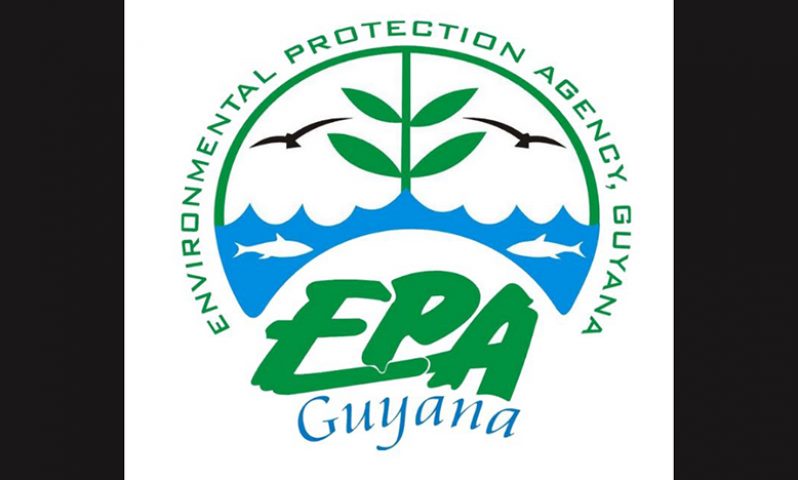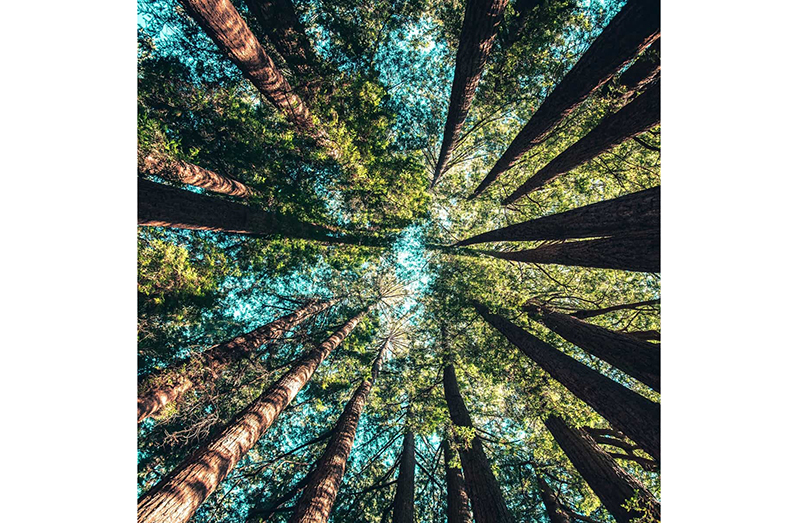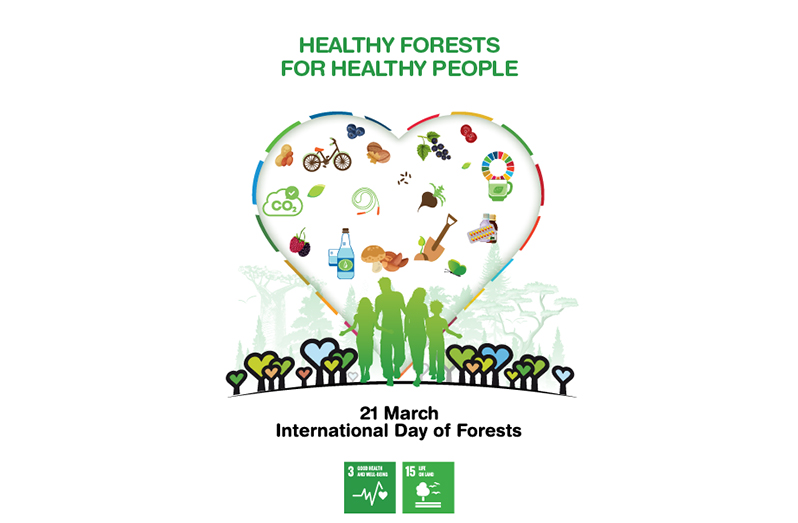ON March 22, Guyana will join the rest of the world in observing the International Day of Forests under the theme “Forests and Health”. This international observance intends to raise awareness of the importance of all types of forests and to promote solutions for issues related to the management of forests.
The World Health Organization defines health as “a state of complete physical, mental and social well-being and not merely the absence of disease or infirmity”. Forests provide, directly or indirectly, important health benefits for all people – not only those whose lives are closely intertwined with forest ecosystems, but also people far from forests, including urban populations – from the provision of food, medicinal plants, and clean water, to protection from the elements (high winds and waves), and naturally cooling urban spaces. Numerous studies have shown that contact with nature positively influences our mental and physical well-being – spending time around trees helps boost our immune system, lowers blood pressure, and promotes relaxation.
Forests filter water and air
By filtering pollutants from air and water, forests help reduce the threats of pollution-related infectious diseases and non-communicable diseases, including diarrheal disease, cancers, and respiratory diseases. Research demonstrates that upstream tree cover is associated with a lower prevalence of diarrheal disease (linked to water pollution) in children downstream. A 30 percent increase in upstream tree cover is linked to a 4 percent reduction in the probability of diarrheal disease—similar to the effects of an improved sanitation facility.
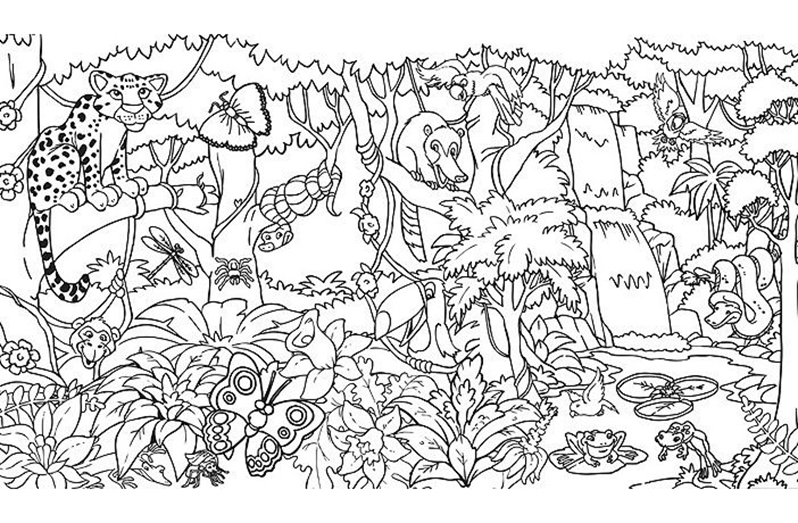 Forests provide us with medicines
Forests provide us with medicines
Many of the medicines we rely on today come from forests. Twenty-five percent of medicinal drugs used in developed countries are plant-based, while it can be as much as 80 percent in developing countries. Forests also provide essential health products such as hygiene and sanitary items like toilet paper, paper towels, tissues, and ethanol for sanitisers.
The masks and protective clothing that frontline medical workers depend on are created from forest products like wood pulp and soluble cellulose fibre.
Forests shield us against future pandemics
Currently, 60 percent of all infectious diseases and 75 percent of all emerging infectious diseases are zoonotic. These diseases originate from the transfer of pathogens from animals to humans, and they usually occur when natural landscapes, such are forests, are being cleared.
Forests are also good for our mental health
Scientific evidence shows that exposure to forests can reduce human stress levels, lower blood pressure, boost our immune system, help us recover from attentional fatigue, and generally improve our overall mood. Spending time in green spaces has also been thought to mitigate the effects of attention deficit/hyperactivity disorder.
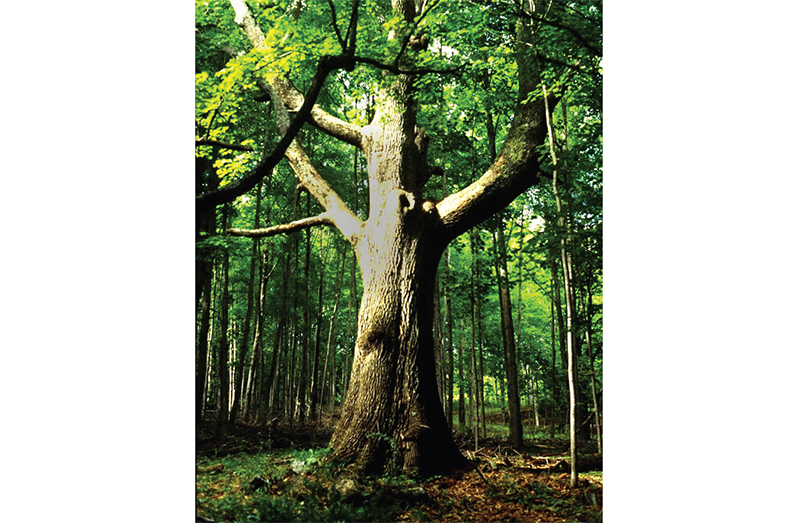 Forests Facts – Guyana
Forests Facts – Guyana
* Guyana’s rainforests cover approximately 85 percent of the country’s land mass; approximately 20 percent of the world’s remaining tropical forests are found in countries like Guyana, with high forest cover and very low deforestation rates. This high forest cover ranks Guyana among the top 10 countries globally.
* Forests in Guyana can be classified as rainforests (36 percent), montane forests (35 percent), swamp and marsh (15 percent), dry evergreen (7 percent), seasonal forests (6 percent), and mangrove forests (1 percent).
* The biodiversity of Guyana’s rainforests is rich, and our forests are home to many endemic species (plants and animals found only in Guyana) and ‘giants’ of the Amazon such as the giant river otter and jaguar. The forests are also home to our indigenous people.
* Guyana’s plan to preserve its mangroves and rainforests can be found in the Low Carbon Development Strategy 2030. This document sets out Guyana’s plan to forge a low-carbon economy, which ultimately seeks to lessen the impacts of climate change, given the country’s vast forest cover and extremely low deforestation rate.
You can share your ideas and questions by sending letters to: “Our Earth, Our Environment”, C/O Communications Department, Environmental Protection Agency, Ganges Street, Sophia, GEORGETOWN, or email us at: eit.epaguyana@gmail.com. Follow us on Facebook and Instagram and subscribe to our YouTube channel.



.jpg)




